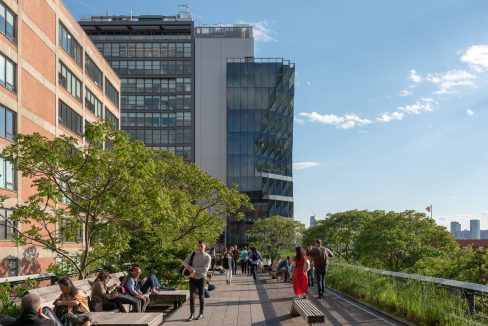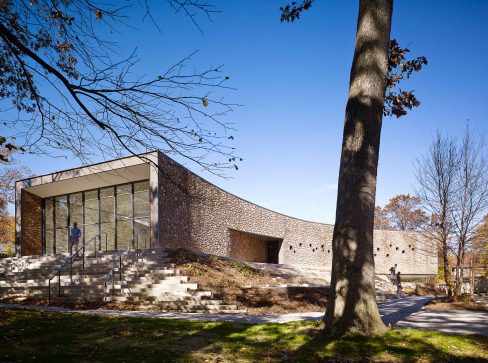Green Building & Design — "Studio Gang Protects Public Space While Delivering Flexible Offices in NYC"
“We set out to design a building that could bring added density and new amenities to the neighborhood while also preserving the quality of space on the High Line and the ecosystems it supports. Our site along the High Line is certainly one that calls for amazing architecture, and our mission was to find a way for it to work with the park in a symbiotic way.”
“Solar Carve (40 Tenth Ave) was Studio Gang’s first ground-up building in New York. The 12-story commercial/office building was particularly meaningful for [Studio Gang Partner and Design Principal Weston Walker], as he leads the New York office. ‘Our work always aims to make positive change, and this project is particularly significant because it’s already changing people’s thinking about how buildings can forge positive relationships with their context,’ he says. ‘Several advocacy groups are using the project as a case study to demonstrate how we can think about zoning differently in New York City and beyond, and how we can leverage technology to make buildings more responsive to their sites.’
Just how is the project changing the way people think? For starters, NYC zoning regulations didn’t anticipate a mid-block public space like the High Line, and the allowable building envelope for the Solar Carve project would have permitted Studio Gang to build right up to the High Line and the site’s edges—blocking a significant stretch of the High Line Park from sunlight and views of the Hudson River.
The design team understood these regulations were designed to protect fresh air and light on the street; such regulations would typically create towers that are set back incrementally as they get higher. But as they studied the site, they realized its unique shape and location required a different approach. They decided the High Line would be best served by a building that inverted the setbacks in response to solar movement.”
Related
Studio Gang: Architecture - Beyond Transparent
In the final chapter of Studio Gang’s new monograph with Phaidon, Jeanne Gang asks what new kinds of glass architecture become possible when our ambitions expand beyond transparency and embrace “a culture of care.”



